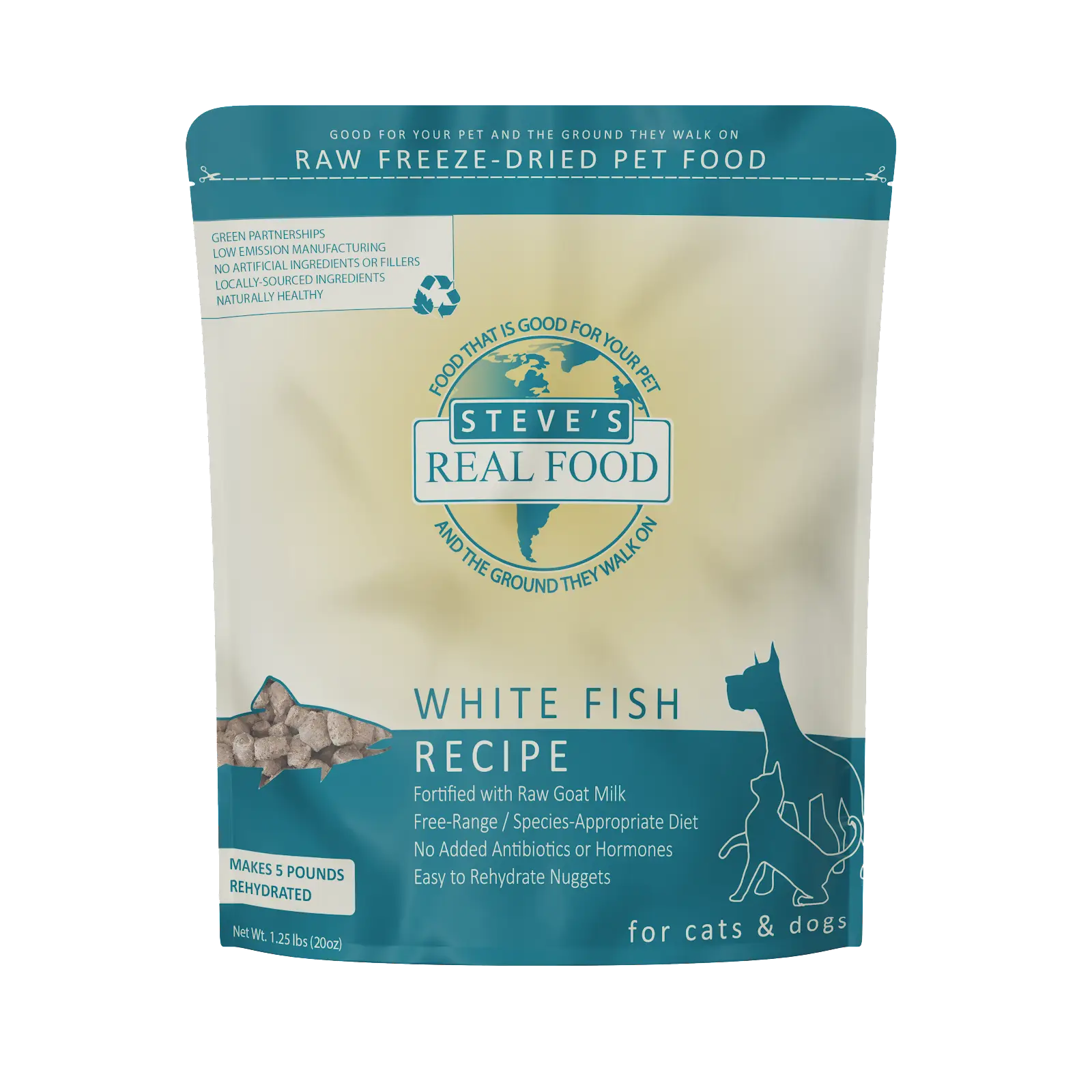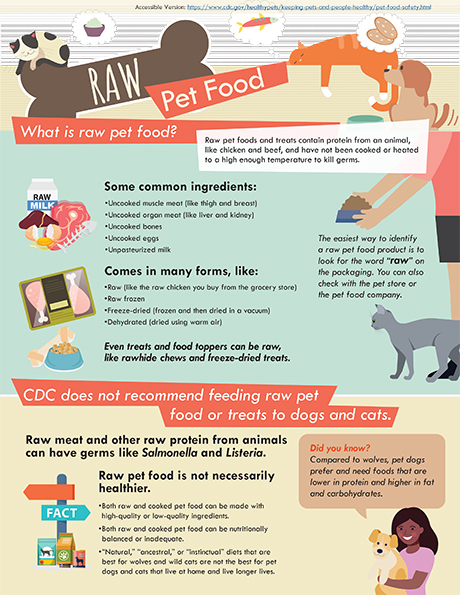Raw pet food can be safe for cats if handled and prepared properly. It’s essential to choose high-quality ingredients to minimize health risks.
Feeding cats raw pet food has gained popularity among pet owners. Advocates argue that it mimics a cat's natural diet and can improve coat health, energy levels, and digestion. However, concerns about foodborne pathogens and nutritional balance persist. Cats are obligate carnivores, requiring specific nutrients that must be carefully balanced in their diet.
Before switching to raw food, consult a veterinarian to ensure it meets your cat's dietary needs. Proper hygiene, safe sourcing, and a well-planned meal preparation routine are crucial to prevent contamination. Understanding the risks and benefits can help you make an informed decision about your cat's nutrition.

Credit: rawznaturalpetfood.com
The Raw Pet Food Debate
The debate over raw pet food for cats is intense. Many pet owners question its safety and benefits. Advocates argue it mimics a cat's natural diet. Critics worry about health risks and nutritional balance.
Pros And Cons
| Pros | Cons |
|---|---|
|
|
Popularity Among Pet Owners
Raw pet food has gained popularity recently. Many pet owners seek natural diets for their cats. Social media influences this trend significantly. Owners share success stories and benefits.
Surveys indicate that:
- About 30% of cat owners consider a raw diet.
- Many believe it promotes health and longevity.
- Pet stores report increased sales of raw food products.
Pet owners often discuss raw diets in forums. They share recipes, tips, and concerns. This community support drives the movement forward.

Credit: stevesrealfood.com
What Is Raw Pet Food?
Raw pet food is an increasingly popular choice for cat owners. It consists of uncooked ingredients that mimic a cat's natural diet. This type of food aims to provide essential nutrients without the processing found in commercial pet foods. Understanding raw diets helps pet owners make informed decisions about their cats' nutrition.
Defining Raw Diets
A raw diet for cats typically includes:
- Raw meat
- Raw organs
- Raw bones
- Vegetables
- Supplements
These components aim to replicate what cats eat in the wild. Cats are obligate carnivores, meaning they require meat to thrive. Raw diets can offer higher protein levels and fewer fillers than traditional kibble.
Common Ingredients
Here are some common ingredients found in raw pet food:
| Ingredient | Benefits |
|---|---|
| Chicken | High in protein, easy to digest |
| Beef | Rich in essential fatty acids |
| Fish | Source of omega-3 fatty acids |
| Organ meats | Packed with vitamins and minerals |
| Vegetables | Provide fiber and antioxidants |
Choosing high-quality ingredients is crucial. Always check for sources that follow strict safety standards. This ensures that your cat receives safe and nutritious food.
Nutritional Benefits For Cats
Feeding cats raw pet food can offer several nutritional advantages. Many cat owners seek options that closely resemble their feline's natural diet. This section explores the benefits of raw food and how it enhances a cat's health.
Mimicking Natural Diet
Raw pet food closely resembles what cats would eat in the wild. This type of diet includes:
- Raw meat
- Raw bones
- Organs
These components provide essential nutrients. Cats are obligate carnivores. They thrive on protein-rich diets. Raw food meets their dietary needs effectively.
A raw diet can improve:
- Energy levels
- Muscle tone
- Overall health
Vitamins And Minerals
Raw pet food contains natural vitamins and minerals. These nutrients support various bodily functions. Key vitamins found in raw food include:
| Vitamin | Benefits |
|---|---|
| Vitamin A | Supports vision and immune function |
| Vitamin E | Acts as an antioxidant |
| B Vitamins | Boosts energy and brain health |
Minerals like calcium and phosphorus also play a vital role. They support bone health and muscle function. Raw food can help maintain a balanced intake of these nutrients.
Choosing a balanced raw diet can enhance your cat's overall well-being. This diet can lead to a healthier, happier cat.
Potential Health Risks
Feeding raw pet food to cats can pose several health risks. Understanding these risks is crucial for cat owners. Two major concerns are bacterial contamination and nutritional imbalance.
Bacterial Contamination
Raw pet food often contains harmful bacteria. These bacteria can make your cat very sick. Common bacteria found in raw food include:
- Salmonella
- E. coli
- Campylobacter
These pathogens can cause symptoms like:
- Vomiting
- Diarrhea
- Fever
It is vital to handle raw food carefully. Always wash hands and surfaces after preparation. Keep raw food separate from other foods.
Nutritional Imbalance
Raw pet food may lack essential nutrients. Cats require a specific balance of vitamins and minerals. Without proper nutrition, cats can develop serious health issues. Common deficiencies in raw diets include:
| Nutrient | Health Issue |
|---|---|
| Vitamin A | Vision problems and skin issues |
| Taurine | Heart disease and vision loss |
| Calcium | Bone deformities and dental issues |
Consult a veterinarian before switching to a raw diet. They can help ensure your cat gets all necessary nutrients.
Expert Opinions
Understanding whether raw pet food is safe for cats requires expert insights. Veterinarians and nutritionists have valuable opinions on this topic. Their knowledge helps pet owners make informed decisions. Let’s explore their perspectives.
Veterinarians' Views
Veterinarians have mixed opinions about raw pet food for cats. Some support it, while others express concerns. Here are key points from veterinarians:
- Risk of Bacteria: Raw food may contain harmful bacteria like Salmonella.
- Balance of Nutrients: Raw diets might lack essential nutrients.
- Health Conditions: Cats with health issues should avoid raw diets.
- Food Handling: Safe food preparation is crucial to prevent illness.
Many veterinarians recommend cooking food. Cooking kills harmful bacteria. This method also ensures a balanced diet.
Nutritionists' Insights
Nutritionists focus on the nutritional value of raw pet food. They analyze its benefits and drawbacks. Here are some insights:
- Natural Diet: Cats are obligate carnivores. They thrive on meat.
- Fresh Ingredients: Raw diets use fresh, whole foods.
- Digestibility: Some cats digest raw food better than processed food.
- Individual Needs: Each cat has unique dietary requirements.
Nutritionists often suggest a balanced approach. A mixed diet can provide safety and nutrition.
Safe Handling And Preparation
Ensuring safe handling and preparation of raw pet food is crucial. Proper practices minimize health risks for both cats and their owners. Follow these guidelines to keep your feline friend healthy and happy.
Hygiene Practices
Good hygiene helps prevent contamination. Here are some key practices:
- Wash your hands before and after handling raw food.
- Use separate utensils for pet food and human food.
- Clean surfaces with hot, soapy water.
- Sanitize cutting boards after preparing raw food.
Always monitor your cat during mealtime. Discard any uneaten food promptly to avoid spoilage.
Storage Guidelines
Storing raw pet food correctly is vital for freshness. Follow these storage tips:
| Storage Method | Temperature | Duration |
|---|---|---|
| Refrigerator | Below 40°F (4°C) | 1-2 days |
| Freezer | Below 0°F (-18°C) | Up to 6 months |
Use airtight containers to prevent odors and contamination. Label containers with dates to track freshness.
Alternatives To Raw Food
Many pet owners explore safe options for their cats. Raw food is one choice, but it's not for everyone. Consider these alternatives that provide balanced nutrition.
Commercial Diets
Commercial diets offer convenience and balanced nutrition. Look for high-quality brands that meet your cat's needs.
- Wet Food: Moisture-rich and often more palatable.
- Dry Food: Convenient and helps with dental health.
- Freeze-Dried Food: Retains nutrients and is easy to store.
Check the ingredient list. Ensure it contains real meat and few fillers. Here is a simple table comparing commercial diet types:
| Type | Benefits | Drawbacks |
|---|---|---|
| Wet Food | High moisture content | Can spoil quickly |
| Dry Food | Long shelf life | Less moisture |
| Freeze-Dried Food | Retains nutrients | Higher cost |
Homemade Cooked Diets
Homemade cooked diets can be a great option. They allow control over ingredients. Ensure you include the right nutrients.
- Protein: Cooked chicken, turkey, or fish are excellent sources.
- Vegetables: Some cats benefit from small amounts of cooked veggies.
- Supplements: Add necessary vitamins and minerals for balance.
Always consult your vet before switching diets. They can help design a balanced meal plan. This ensures your cat stays healthy and happy.
Making An Informed Decision
Choosing the right food for your cat is crucial. Raw pet food is popular but raises questions. Understanding the benefits and risks helps you make the best choice for your feline friend.
Assessing Your Cat's Needs
Every cat is unique. Their dietary needs may vary based on:
- Age: Kittens need more nutrients than adult cats.
- Health: Certain health issues require specific diets.
- Activity Level: Active cats may need more calories.
Consider these factors:
- Consult a vet to assess health.
- Monitor your cat's weight regularly.
- Watch for changes in behavior or energy levels.
Understanding these needs helps you choose the right raw food. Each cat has specific requirements that must be met.
Consulting With A Vet
Before changing your cat's diet, consult a veterinarian. They can provide valuable insights into:
- Specific dietary needs based on health.
- Safe raw food brands and recipes.
- Potential risks of raw feeding.
Your vet can help you create a balanced diet plan. This ensures your cat receives all necessary nutrients.
Regular check-ups can help monitor your cat's health. Always keep your vet informed about dietary changes.

Credit: www.cdc.gov
Frequently Asked Questions
Is Raw Pet Food Safe For Cats?
Raw pet food can be safe for cats if handled and prepared correctly. It's essential to source high-quality ingredients and follow proper food safety guidelines. Consult your veterinarian before transitioning your cat to a raw diet to ensure it meets their nutritional needs.
What Are The Benefits Of Raw Food For Cats?
Raw food can offer numerous benefits for cats, including improved coat condition, healthier skin, and better digestion. It may also lead to increased energy levels and weight management. However, it's crucial to balance the diet to ensure all nutritional requirements are met.
Can Raw Food Cause Health Issues In Cats?
Yes, raw food can pose health risks for cats. Bacterial contamination, such as Salmonella or E. coli, is a significant concern. Additionally, an unbalanced raw diet can lead to nutrient deficiencies or excesses, impacting your cat's overall health. Regular veterinary check-ups are essential.
How To Prepare Raw Food Safely For Cats?
To prepare raw food safely, always use fresh, high-quality ingredients. Clean all surfaces and utensils thoroughly before and after food preparation. Store raw food in the refrigerator or freezer, and follow guidelines for thawing and serving. Always observe your cat for any adverse reactions.
Conclusion
Raw pet food can offer benefits but also poses risks for your cat's health. It's essential to weigh these factors carefully. Consult with a veterinarian before making any dietary changes. Ensuring a balanced and safe diet is crucial for your feline friend’s overall well-being.
Choose wisely and prioritize your cat's health.














